2016 PDAC Special: this is the second half of a chapter from my book “The Last Great Adventure, Part One”, (a work in progress). When the book finally gets published the profits will go to the Baca Ortiz Hospital for Children in Quito.
One day I got a phone call in the Toronto office from my lawyer in Quito, who said a guy wanted permission to mine “On the Princesa concession.” I responded, “Is this guy naïve? He can’t just mine on my property, he has to make me a formal proposal to compensate me. Besides, no one has found gold on Princesa yet.” “Well, he says he has found gold and he wants to mine it.” Very intrigued I said that I would fly down directly and meet with him at noon on Saturday by the big clock in Zamora. On Saturday I brought along my geologist, Fredy Salazar, who formerly worked for Newmont Mining, and his assistant Claudio Cruz.
No one showed up in Zamora, so I said to Fredy, “Let’s just drive to Zarza village (nearby) and ask people where the new mine is.” When we got there, we flagged down Luis, the owner of the local inn and asked him if he knew of a new mine. He paused for a second and said, “Sure, I can take you there, but we have to take my boat.” He had a motorized wooden boat that he used to take fuel upstream. On the way upstream through many twists and turns he paused to cross himself in front of a grave on the riverbank. He said it was his brother, who had drowned the previous year. It was a sober beginning to our trip. After about an hour and a half we pulled into the bank, and he said to follow the trail for about 20 minutes and we would come to the mine. He had to stay with the boat.
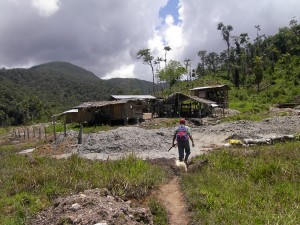
Accompanied by Luis’s dog, who refused to be left behind, we followed the path until it opened into a large clearing where we found some ramshackled buildings, a Chilean mill with an ore pile next to it and a little ways away what looked like the portal of a tunnel into the hill. Claudio and Fredy rushed over to the ore pile. I yelled, “Jesus, Fredy, you’re going to get yourself shot.” No sooner had I said that than the shutters opened on a second story window and a woman’s head emerged. Did she fire off a string of abuse! It was in Spanish but I recognized most of the curse words. Fredy ordered her to settle down and informed her I was El dueño de la propiedad (owner of the property). Immediately she ran downstairs asking for forgiveness. She said she had been meaning to go to Quito to see me and she knew they were mining illegally but it was “only enough to feed the family” (always the case no matter how rich). She brought out some kool-aid for us and then her husband returned from hunting with shotgun in hand. She hastily explained who we were and he said we were free of course to look around and take samples, but that there were much richer mines further up the trail. One was an hour in one direction and the other an hour the other way.
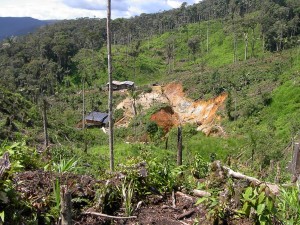
The ore pile at Las Peñas, where we had been, looked very impressive, and you could pan a nice stream of gold from the crushed material from the mill, but nothing was to prepare me for what I saw next. We got to the top of a ridge which looked directly down on a 100 metre long trench with a large quartz vein exposed in it. We climbed down off the ridge on to a series of elevated wooden planks on which miners were pushing wheelbarrows of broken rock to three separate mills. There were a number of clapboard houses around the mine workings and we were told there were 75 people working there. Their eyes were like saucers and clearly they had never had visitors before. Unlike Las Peñas, here the miners were hostile to our visit, and after grabbing a few samples we hastily retraced our steps back to the boat on the river where Luis was waiting. We quizzed him about what we had seen but he knew very little. The miners kept to themselves.
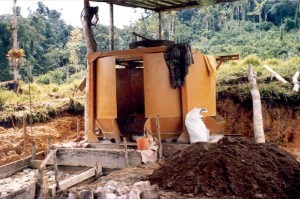
The next day we had an appointment with Daniel Philco in Zamora and I took the opportunity to plot up the positions of the mine workings we had looked at on topo maps. It became quickly obvious we had not been on the Princesa concession at all, but on the adjacent La Zarza concession which was not my property. We decided to go in by car to the Princesa concession from the south, through the village of San Antonio that afternoon. In no time at all we found a crew of five men pouring the cement foundations for a new mill on my property. I yelled at them and they scattered into the bush leaving their tools behind. I was told that no one came back for five weeks. There were some open workings with exposed quartz veins which we sampled.
When I plotted all the spots we had been to on the topographic map that evening they all lined up in a row like a string of pearls. I knew we were on to something major and I got Fredy to take me to the telephone exchange in Zumbi, the closest little town. Fredy had visited the Zarza concession some years before when he worked for Newmont. In fact, he had prepared a presentation for his bosses recommending that they pick it up, but as luck would have it the next morning he and a number of other employees were let go in a retrenchment. Fredy had always wanted me to see La Zarza, but we had never had the time. It took him almost four hours to track down Anatoli Gatsalov, the owner of the concession through a series of old phone numbers. He agreed to meet with us at 11 the next morning in Quito.
I knew it was a pretty safe bet that Gatsolov had no inkling there were illegal miners taking high grade off his property. In turn I had no inkling of what was coming next.
Anatoli had been a career diplomat with the Russian Foreign Service, but when the iron curtain fell and the Soviet Union broke up he was left abandoned in Quito without a job or a plane ticket home. Together with three partners, also from the Embassy, they decided to stake a large concession in the border area. How they happened upon that specific area is unknown. What happened next was most strange. A group of Colombian businessmen approached the partners to lease the concession and put it into production. Anatoli said that no one had found any gold up to that point, but the Colombians acted as if that wasn’t important. They imported a wash plant and some heavy equipment and proceeded to mine alluvial gravels along the Rio Blanco. Luis from La Zarza, the same Luis who had taken me by boat upstream, told me a year or so later that the whole thing was a dummy operation, set up to launder Colombian drug money. The Colombians were buying raw gold from the local gold buyers, over the spot price, with dirty drug money, and then declaring the gold as production from the plant. This in turn was sold to the Banco Central for Sucres which could easily be exchanged for Pesos and repatriated to Colombia. All the Colombians needed was a convincingly real mining project in a gold rich area where there was lots of mining activity. Anatoli and his partners were getting a cash payment every month so they were happy. No one ever went down south to Zamora-Chinchipe to check out the operation, which suited the Colombians just fine. Luis was present on site a few weeks into the mining operation, on a day that changed everything. One scoop of the excavator exposed the bedrock, which was covered with “Chispas de Oro” (nuggets) scattered like rice. The Colombians on site were amazed. Further testing down to bedrock showed gold just about everywhere in the basal gravels. They hastily ordered more equipment and within a month or two had 11 excavators on site mining a whopping 8 to 13 kilos of gold every week. Anatoli of course was oblivious to all this, and only became aware of the scale of the mining when he got a letter from the government, demanding as the concession owner to clean up the many stagnant pits of water and piles of gravel left after the Colombians had decamped a few years later. It must have looked like the Battlefield of the Somme. More years later the Ecuadorian manager of the mining operation was tossed into prison by the leaders of the local town of Los Encuentros, because no taxes had ever been paid to the municipality. The company though had long since dissolved and after holding him for a month they let him go.
Anatoli told me he spent $1 million in restoring the site with bulldozers. This had to be an exaggeration of course, but he felt like he had been swindled and wanted to make me pay for it. Years later it would all get torn up again by illegal miners after Aurelian was sold. The gold of course was coming from satellite deposits around Fruta del Norte, which itself was a blind deposit and did not come to surface. Anatoli’s partners took off back to Russia when the reclamation order was made, leaving him holding the bag. In 1997, he managed to convince Climax Mining of Australia to explore the Zarza concession. Early into the exploration the Bre-X debacle in Indonesia was exposed, crushing junior mining internationally. The company held on for a short while by joint venturing the project with an Argentine outfit but they soon gave up and left Ecuador in 1999 after a drilling campaign. David Shatwell, a consultant working for Climax sampled the discovery outcrop at Fruta del Norte. It yielded high levels of arsenic and antimony but little gold. In 2006, Steve Leary and his team would sample the same outcrop, but adding mercury to the assay requests. It was off the charts. But I am getting ahead of myself. I visited Andean Resource’s Cerro Negro property in Patagonia in 2010 and wanted to shake David’s hand but he was on field break. He’s responsible for that discovery, now in production by Goldcorp. Clearly he’s a great exploration geologist.
Fredy Salazar and I drove all through the night, after we had first contacted Anatoli. We finally got to the port of Machala and boarded a flight to Guayaquil, then a second flight to Quito in time for our 11 o’clock meeting. Anatoli still held the Zarza concession, but his business was now in selling medical equipment. His secretary escorted us to his personal office past the glass-walled conference room. There on the big table were spread out dozens of maps that were being carefully scrutinized by a gentleman Fredy recognized. He said in whispered tones, “That guy’s a mining engineer.” “Yikes!” I thought. After we sat down and went through introductions Anatoli said, “Isn’t it curious that after years of nothing two people show up the same day with offers to buy my mining concession?” The engineer was going through all the Climax Mining reports. Wow! This was a fine kettle of fish.
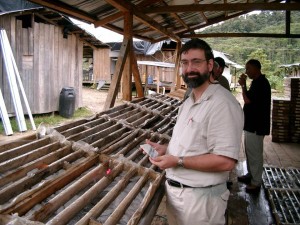
It turns out the engineer had a suitcase with $160,000 US in it, and wanted to buy the concession outright. He was working for the illegal miners! After my visit they realized the jig was up; either they stop mining and run off, or buy out the concession. I couldn’t very well tell Anatoli that this money was the illegal proceeds of gold from his own concession. As far as anyone knew, Climax had found nothing worthwhile and that was pretty much the end of it. The two new discoveries, one of which I saw with the 75 miners, I named “Aguas Mesas Norte and the other Aguas Mesas Sur”. These I suspect were unknown to him; but I’ll never know. He was a pretty canny character. (Aguas Mesas is a nonsense name that I borrowed from the “Aguas Mesas Lode” in the B-movie “Eight Legged Freaks”, which came out at the time.) So Anatoli told me that I had 24 hours to come up with a better price; and it better be more than $160,000 and “in cash”. That night I didn’t sleep one wink. The greatest piece of exploration ground I had ever seen in my life and the doughnut hole in the middle of my (then) 46,000 hectares. This was mid-2002 and I was already 18 months into exploration. Everything was being funded out of my hip pocket. I had enough money banked to top the other offer, but I’d have nothing left to operate. That’s when I called my Dad. My parents were in Las Vegas of all places, with another couple. Dad was playing poker, at the aptly named Golden Nugget Casino. He must have been on a winning streak and in a great mood because I said to him I had just seen the most exciting gold prospect of my career and had to have it. Could I please borrow $200,000? The phone went quiet for a second and then he said, “If you really think it’s that great then I trust your instincts.”
The next day I had my stake and my own poker game of sorts to play with Anatoli. He certainly played hard ball with me, but finally accepted $250,000 – a cash payment of $50,000 and the rest in stages over the next year and a half. Hallelujah! Later over vodka shots he said he would have taken $200,000. Little did we both know that 4 years later almost $20 billion in gold and silver would be discovered.
 Straight Talk On Mining Insights on mining from economic geologist Dr. Keith Barron.
Straight Talk On Mining Insights on mining from economic geologist Dr. Keith Barron.
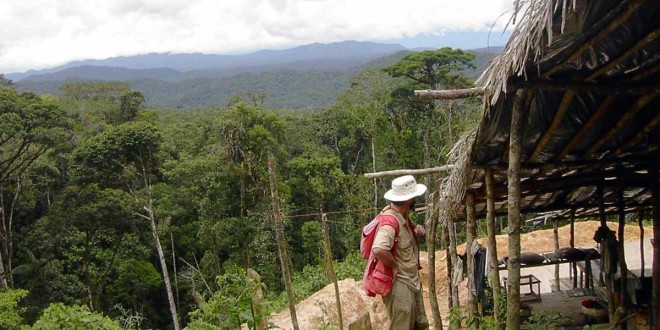
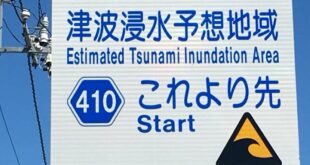
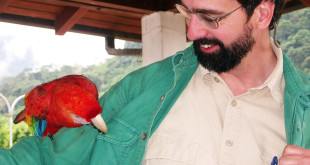
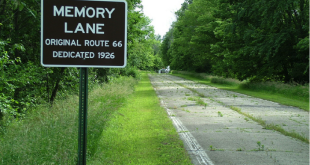

Great stories Keith. Followed your writings years back; look forward to hearing when your book is to be published.
Very kind words. Thank-you!
Great story good luck j o r g e n .
I was a very early investor in Aurelian at penny stock levels. I always wondered how you pulled that off, very interesting! Now I’m throwing money at U308 Corp. Love the story. Who says lightning doesn’t strike twice?
Thanks for the support!